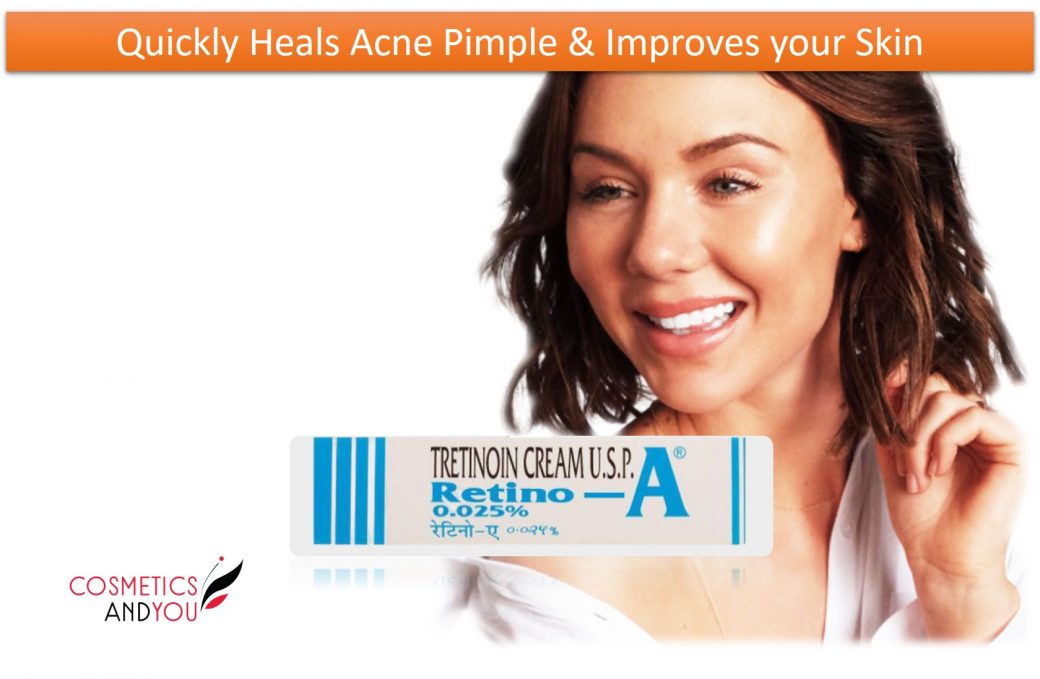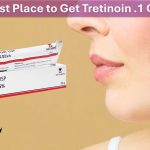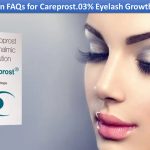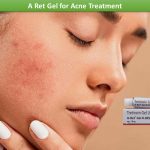Tretinoin is a topical formulation that comes in different strength and brands for treating different acne types. It is considered as the standard gold treatment for acne vulgaris by many dermatologists. Tretinoin is a popular and proven effective medicine not only in reversing acne condition but also the signs of ageing, dark spots, and skin dullness. Tretinoin belongs to retinoid chemical, a class of drug derived from vitamin A, it is also a clinically-proven drug by billions of studies to quickly heal acne pimple and improve your skin ageing process.
Working of Tretinoin
Tretinoin works by affecting the skin cells growth while acting as an exfoliant and reduce skin breakouts. The cream simultaneously works on signs of ageing and improve sun damages. According to skin experts, Retinoid improves the appearance of dark spots and unclog the skin pores that promote pimples. Tretinoin .025 cream is a one-stop solution to deal with mild to moderate acne scars, the cream effectively prevents the formation of whiteheads and blackheads.
How much time Tretinoin take to show its result?
Like any other medication, tretinoin also takes some time to show its results. Dermatologist found this formulation effective enough to eliminate acne pimples if applied regularly for the recommended period. About 8 to 12 weeks is a normal timeline that tretinoin 0.025 takes to deliver its results. For treating acne, opt cream or gel formulation of tretinoin with 0.1% strength to start the treatment. Initially, you may notice your acne condition worst but that’s how tretinoin starts it working. The topical formulation aggravates acne at the beginning of the treatment which means the medicine will attack to inside pimple formations to make them come out first. Once all your pimples come out, the cream will start its working by healing your pimples gradually.
Application methods of Tretinoin
Here are some best tips to apply tretinoin gel 0.025 to achieve faster results:
1. Clean your face or affected area by using a mild cleanser with normal water. Pat dry your skin before applying the cream. Also, try to use this medicine 30 minutes before going to bed.
2. Take a pea-size light moisturizer if you have a dry or combination skin and apply all over your face.
3. Take a pea-size tretinoin medication to cover up the affected area.
4. Apply a thin layer using your fingertip and spread the medication evenly on the affected area, rub it gently till the cream or gel get observed by the skin. Avoid sensitive area like eyes, nose, and lips.
Tretinoin Cream 0.025 Before and After
It is best to use a mild cleanser or non-medicated soap. Wash your skin gently rather scrubbing it harshly. Do not over-wash your skin as this can make your acne worse, twice a day skin wash is enough to remove excess oil and dirt. Always pet your skin with a soft towel or a cotton cloth. Tretinoin is a prescription medication, it is always advisable to consult a skincare specialist before you use tretinoin. He will set the strength and treatment duration considering your skin condition. Wash your hands before and after using a Tretinoin preparation. Do not apply this topical formulation on cuts and sunburned skin area. Consult your doctor if you have a skin condition like psoriasis and eczema.
Pregnant women or breastfeeding moms should not use tretinoin without consulting a doctor. Children below 12 years of age should not use
Retin a cream 0.025 medication. Topical tretinoin comes in different strengths like 0.01%, 0.02%, 0.025%, and 0.05% concentration. Begin the treatment with the lowest dose to see if your skin gets adjusted to it.
Side Effects of Tretinoin
The commonly reported side effects of tretinoin are few. Not everyone experiences the side effects but, in some cases, it can show severe effects as well. Consult your doctor to address these side effects. Some possible side effects are:
Redness or skin peeling
Burning or itching skin
Dry skin





